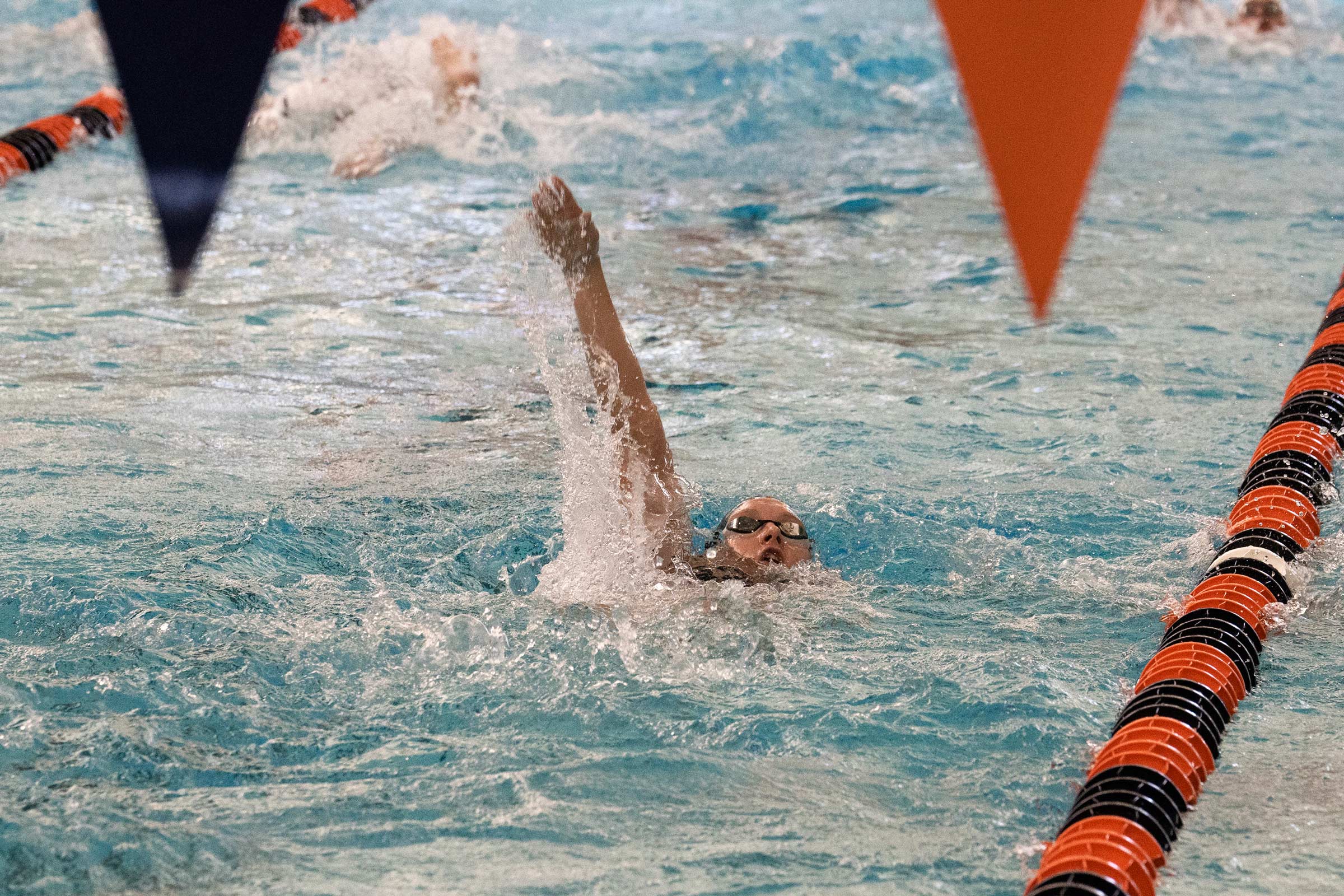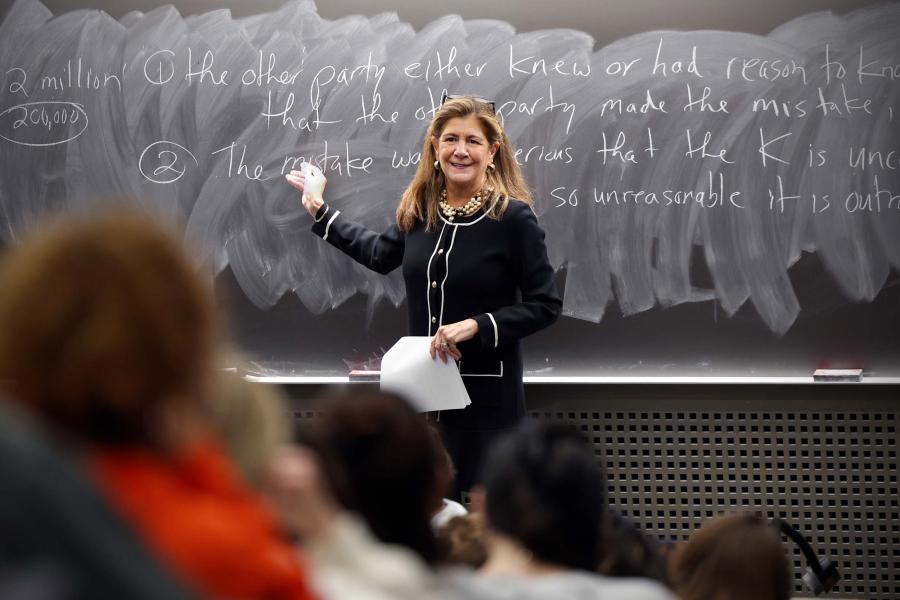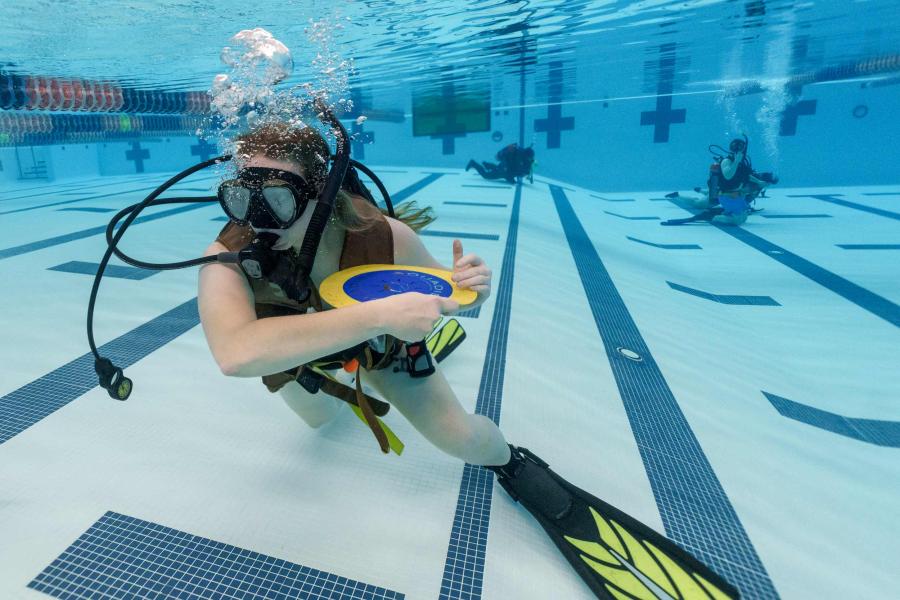Because the games took place at the height of the pandemic, she didn’t get to see much of Japan. Even so, she won’t lie; while the Olympic merch room was no Tokyo Tower, it was still amazing.
Now she’s 19. Curzan made the nervy – but far from impulsive – decision to transfer to UVA from Stanford University this fall as a second-year student.
“So far, I’ve loved it here,” she said.
Because of the discipline required, the life of a scholar-athlete can be cloistered. It relies on the Benjamin Franklin approach: early to bed and early to rise.
Her closest friends are her fellow athletes. Curzan knew many of the swimmers before coming to UVA, including sisters Gretchen and Alex Walsh, who also made it to the last Summer Olympics.
Her move to Charlottesville put the Cary, North Carolina, native closer to home, though the transfer was too late for her to compete in this year’s college meets.
Still, she’s hoping that the combination of Olympic-caliber teammates, a renowned head coach and UVA’s one-of-a-kind sports math game will all add up to a return to the podium in Paris in 2024 – this time maybe even with her toes at center spot.
Data Mining Is Gold Mining
NBC, which televises the Olympics, will feature UVA on Nov. 26 at 2 p.m. as part of its “Chasing Gold” series. The monthly show is chronicling the run-up to the 2024 Summer Olympics and Paralympics.
NBC was interested in the depth of the storied swim program that UVA coach Todd DeSorbo leads, but also in the swim data analysis program led by renowned math professor Ken Ono, who doubles as the University’s STEM adviser.
To get the data, swimmers don accelerometers around their waists during practice to measure force from the front, back and on either side as they move against the drag of water.
Ono and his team, which includes students in the School of Data Science, cull information from the devices. In addition, a pool wall is equipped with a series of underwater cameras to mesh accelerometer insights with video footage.
Ono works with his assistant, Jerry Lu, a 2022 graduate of the UVA School of Engineering and a current graduate student at the Massachusetts Institute of Technology. Lu divides his time between Charlottesville and Boston to help with the project.
Lu syncs his tablet with Curzan’s accelerometer and monitors her progress in real time. Curzan also wears a tempo trainer underneath her swim cap that blips a tone each time she should kick. Lu said it all boils down to a classic equation of force equals mass times acceleration. Small adjustments in the force behind every kick can make a big difference over a lap.
“We’re not here to make them our coding monkeys,” Lu said. “Ken and I are here to make it fun for them. They’re elite swimmers. It’s up to them to figure out how to use the box of tools to solve problems.”
At the end of one of the initial days of training with the accelerometer, Lu sent Curzan’s data to her phone, and she reported what she was learning.
“We did underwater dolphin kicks fast the other day, just to see how fast they went when I was tired,” she said. “One thing we noticed is that my downbeat and hands underwater look way too far below my body line. So it was creating a lot of drag. We just wanted to retest that again today to see if different tempos and thinking about different things would alter how that would look in the data.”
She said it would be several weeks before DeSorbo would begin to have a fuller picture from which to coach her on changes.
‘Chasing Gold’ in the Classroom
Curzan is among the swimmers taking Ono’s graduate-level independent study course, Learning Methods for Elite Swimming Analysis. They gathered recently in O’Neil Hall to give presentations for NBC. The students’ practical research – using measurements of the kinetic energy of their own bodies – combines fluid mechanics with biomechanics and numerical methods.
Curzan gave her presentation on the accelerometer and how to analyze the data. “I went into how you would look at the graphs when comparing people and how you recognize differences in areas of opportunity,” she said.
“She did a great job explaining something really complex and simplifying it,” said Megan Santaniello, a senior manager for editorial content at NBC Sports.
The swimmers can review the real data points of past swim champions to see how they stack up. Once they’re no longer competing collegiately, the swimmers’ personal data will be available to other researchers.
Ono has been testing champion swimmers at top college programs such as Auburn University; the University of California, Berkeley; the University of Georgia and the University of Indiana for almost a decade.
“Our database has accelerometer data and video for many Olympians and NCAA champions,” he said. “To put this into perspective, I’ve run tests on 20 members of the 2021 U.S. Olympic Team. Earlier this year, we tested the National Junior Team at the Olympic Training Center in Colorado Springs.”
NBC wrapped their shoot, and Curzan scooted to her next class. Besides Ono’s course, she’s taking microeconomics and calculus and, in her “free” time, she’s one of a trio of producers on Ono’s “Hoos in STEM” podcast.
Ono said Curzan’s versatility and cheerful persona are among the attributes that stand out most to him.
“She’s a champion athlete as well as a stellar honors STEM student,” he said. “I am deeply impressed by her unbounded energy and enthusiasm, and her knack for making things fun. She’s Dolly Parton-nice in person and Serena Williams-fierce in the pool.”










